John Gomez is CEO of JGo Labs.

We haven’t talked for some time. Let’s start out with the obvious question. Why did you leave Allscripts?
There isn’t really a deep dark reason I left. There really isn’t a juicy back story. After almost eight years, I didn’t feel I could make the impact I wanted to continue to make and my career was pretty much at a standstill. I realized that I was becoming stagnant and I am not the type of person who likes to be stagnant. As much as it pained me, I decided that it was time for me to leave and pursue other opportunities.
During my time at Allscripts and Eclipsys, I had a tremendous opportunity to learn and stretch my abilities. I built an international business that started as four people and was break-even from Day One. Today, that business unit is tracking to be valued at over $100 million. I got to oversee and run our business development groups, product marketing, product support, and services organizations. I was able to work with some really bright and passionate product development people who I am truly proud of. I also got a chance to introduce some awesome concepts and innovations to healthcare information technology.
I do miss the people, the clients, and the products, but I am ready to try something different from an intellectual standpoint.
Name some of the innovations.
We released the first App Store in HIT, allowing third parties to access to our products through APIs. We provided copies of database schema to clients, thereby allowing them to access their data without having to confront industry standard obstacles. We also pushed hard to have a well-understood object level API. We centralized security and auditing. We did a lot of work on mobility. We redrafted our UI to be far easier to use and more powerful. Lastly, we introduced personalized workbenches and physician mobility products.
This was a lot of work, but we added substantial value to the companies’ respective product lines and enhanced capabilities for our respective customers.
Do you think the merger of Allscripts and Eclipsys was a good idea?
Yes. Both companies had offsetting strengths and weaknesses. Allscripts was strong in ambulatory and weak in acute. Eclipsys was the opposite. From a philosophical perspective, it did and does make total sense. The companies’ products gaps overlapped well and I know that there is tremendous work being done to continue fusing their respective offerings.
Any lessons learned from the merger or your time at Allscripts/Eclipsys?
So many I have actually thought about writing a book about it, kind of like a guide for executive leaders.
The biggest lesson is be product led. It is all about the product at the end of the day. If you build great products without compromise, client satisfaction, employee morale, and loyalty as well as the profits will follow. If you just focus on the financials and making the numbers, you’re not going to really deliver over the long term.
Steve Jobs, Jack Welch, Lee Iacocca, and Steve Denning all preached and proved that lesson, yet today way too many companies sell out to Wall Street and try to make a quarter happen rather than really standing strong and leading with their products and all the supporting infrastructure required to make that happen.
Think of it this way. If two companies met on the field of battle, all they would have is their products and their service and support teams. The victor would be the one with the strongest products, services, and support. All the other trappings are just that – trappings. Great products are the backbone of a great company.
What you would tell your replacement?
I don’t know the man, but from what I hear he is a good guy and has strong experience. My advice would be rather generic to anyone taking a role for an enterprise software company, not just my replacement at Allscripts.
First and foremost, learn the industry and lead. For him or anyone who wants to build great products in this industry — or any industry for that matter — I would tell them to learn the industry and challenges of the clients. Get on the ground and actively design your products. Don’t just delegate — lead the design and be part of the birthing experience.
Product managers are a good source of information, but ultimately the leaders of a company should be deciding on exactly how the product will function, wow, and thrill the clients. If you can’t log in, use, or install your products, move on to a new company and line of work. So my humble piece of advice: learn the industry and truly learn the products inside out.
Any other advice for Allscripts?
OK, I will add this, given my continued love of the entire Allscripts team. Stop telling people about your past and your car collection. No one cares and it just alienates you. Take the time to create a new chapter of shared experiences. You’re better off just asking others what they think and save the personal stories for a year from now when you have earned their trust and respect.
That said, I think my replacement, from what I know, is a great choice. He has overall been really well received and embraced. At the end of the day, people need to accept him as he is and for who he and give him a chance.
Allscripts filings indicated that you would be consulting for the company. What are you working on with them?
I think there is some confusion out there in regards to my relationship with Allscripts. The truth is that since my departure on May 31, I haven’t had any input into Allscripts products, strategy, or direction. There was some thought of me doing consulting for them, but we couldn’t come to terms.
Last time we talked, I quoted a reader who had called you "the Steve Jobs of HIT.” Now you and Steve have both resigned from the companies that defined much of your career to date.
I am truly no Steve Jobs and I doubt I could ever fill his shoes, or sandals as the case might be. I appreciate the compliment and understand the analogy, but honestly, I just love building great products. I truly believe that if you do great things, great things follow you. Love your teams, love your clients, and love your products. The rest will follow. The moment you realize you can’t love those around you and what you’re doing, it’s time to figure out a new path.
I would suspect that Steve has done most of what he has done out of love. That love translated to great products that changed lives and created fanatical followings and ultimately tons of margin and revenue. If there is any similarity between Jobs and me, it is that we are truly passionate about building great products people love to use and buy.
What are you up to now? A reader says he hears you and Jay Deady are returning to Allscripts.
I am not in talks of any kind with Allscripts to return. As far as Jay goes, he isn’t either, to the best of my knowledge. Jay and I do talk, and from what I can tell, he is loving life and leading an awesome company doing some rather great things for healthcare related to patient and resource tracking, called Awarepoint.
I started a small company called JGo Labs. Our mission is to build great leading edge products for HIT as well as in other industries. Our products focus on home healthcare. Specifically, gaming to start, predictive informatics and diagnostic decision support, and robotic aides. We also are taking all we know about building great products and working with some terrific companies in security and HIPAA compliance, mobility for healthcare, and some really interesting growth areas.
Given my passion for Apple, we are also working with a couple of hospitals on how to help them become more like Apple in terms of how they design their facilities, patient experiences, and workflows.
Any hints who you’re working with?
Sure, but I have to be a little cloak and dagger as we are bound by non-disclosure. Basically we have a series of companies reaching out to JGo Labs and asking us to help them build some really compelling products for HIT. By “build,” I mean design, strategize, evolve, and drive their ideas forward. We are very much like an IDEO or Dyson in regard to this, acting as a research lab and product design group for these companies.
At the moment, we are working on a very sleek and innovate HIPAA Compliance Appliance for one company, two very cool mobility platforms, a voice product, an AI-based documentation system, as well as some products related to workflow and process engineering. We are also in talks with the US Army regarding some advanced research that goes well beyond the current state of HIT offerings.
What about your own products? You’re a development guy.
JGo Labs is divided into two divisions. The Confab Group is doing consulting to other technology companies, their boards, and hospitals. The other division is The Manufactory, which we view as an old-world artisan studio where we craft our own products.
We are working on a very cool Xbox game for home healthcare using the Kinect technology from Microsoft. We are also working on developing technologies which bring concepts from outside healthcare to healthcare. Much of what we do is ask “what if.” For instance, “What if you could apply cross-sell and up-sell algorithms to helping clinicians?” or, “What if you could predict outcomes of a decision based on similar biological attributes and observations?”
It is very far-reaching and speculative in terms of our own products. But without risk, there is no reward.
I have no interest in continuing to work on EMR/EHR technologies as that is a crowded space with little growth. I really love the idea of working on those technologies that change the game on how we deliver healthcare. The stuff we are working on has huge potential returns and we are looking at it holistically in terms of assuring any product we release is a great experience for our clients.
We are actively working on these items today, but also trying to secure funding to accelerate their market entry. We won’t disclose our release dates, but we are trying to be as aggressive as possible. We would be happy to give you a sneak peek in the coming weeks.
What does Apple have to do with hospitals?
We started asking, “What would a hospital be if Apple designed the hospital and everything in it?” We are working with a couple of hospitals who are trying to improve their operations, margins, and patient/clinician experiences and trying to apply an Apple-esque approach.
For instance, collaboration is something that just doesn’t happen enough in hospitals. Not that it doesn’t take place, but it is cumbersome and disruptive. We are looking at a technology from a company called Blurts to see how micro-voice tags can be used to help drive better collaboration.
We are also looking at how people flow and interact with the healthcare experience and taking a lot of ideas from how Apple design’s their retail stores to route patient traffic, greet people, and interact with them and move them through the institution faster, thereby providing better returns for the hospital and overall higher quality outcomes across multiple metrics.
Your name came up with some kind of hacker convention. What was that about?
Defcon is one of the largest, if not largest, gathering of hackers in the world. I was asked to present on how to hack healthcare systems. I ended up presenting on how to hack not only your basic networks, but how you could change a diagnosis in an MRI or CT scanner or how you could literally kill a patient by hacking a medical device or rules engine. It isn’t that hard to do, and in this world of cyber-terrorism, I think that this is a serious exposure for hospitals.
Privacy regulations are not enough when you can literally alter data used by clinicians to make life or death decisions. If you compromise healthcare and shake people’s confidence in a doctor’s ability to safely treat patients, then follow that with a biological attack, even a small one, a terrorist would have one seriously successful attack.
What’s the value in telling hackers how to hack?
We aren’t showing anyone the specifics or teaching people how to do what we outline, just alerting people that it is possible. My hope and goal is to work with the Department of Homeland Security to help get ahead of this problem and help healthcare organizations address this issue. It is one of the reasons we are working with people like Corey Tobin, head of the Healthcare Solutions Group at Trustwave, on a really compelling compliance and security offering specific to healthcare that is ground breaking.
You implied that the EMR/EHR market is stagnant. Is everybody who assumes it’s the hottest thing going wrong?
It is a hot market, but that doesn’t make it a growth space. Growth is about developing products that create 20%-30% growth for a company year over year. Fundamentally, the EMR or EHR market isn’t going to yield that return or won’t long term. Eventually will be rather flat, or companies will need to expand to overseas markets, which most are not positioned to attack.
Let’s face it, we aren’t building a ton of new hospitals every year where you can go schlep your products or suddenly seeing tens of thousands of doctors every year looking for a new system. Given those factors, at least here in the US, and the fact that you have a hugely dominant vendor like Epic, well it isn’t really the place where you are going to see a lot of growth. There will be some growth and companies in these sectors will probably post some good numbers, but it isn’t going to be dramatic. You will see a bunch of services money from maintenance agreements, but I doubt anyone is announcing they are going after 1,000 new hospitals that just came into play.
What are your predictions for the healthcare IT market?
Analytics is going to be huge, but I don’t see any vendor today who really gets it. By “get it,” I mean that they are making it easy to integrate, don’t require millions of services hours, and that the system is intuitive and built on a platform that has the ability to meet future demands while providing just-in-time information.
Mobility is obviously hot. Regardless of what the old-timers think, it is going to be the future. Mobility apps will be hot, but are people willing to pay for them or are they part of the core offering from a vendor? I would heed vendors to figure that out. I see tremendous upside for niche vendors and would also see great opportunity for acquisitions of mobility vendors.
I think infrastructure will be hot. I mentioned security already, but also things like mobile device management and provisioning, medical device integration, disaster recovery, long-term storage and smart retrieval, and home healthcare and robotics.
Why home healthcare and robotics?
First, every human is a potential customer, so my bet is if you want to see awesome returns, you target home healthcare. Very few people are today, and those that are rarely get it. Secondly, it is a cool market that has a lot of need. I don’t think the PHR is the ticket to this market. I would focus on gaming and robotics. One is a mid-term deliverable and the other long-term. Both offer huge upsides to patients and clinicians, especially if integrated with mobility.
Somebody e-mailed me this week that you’re working on healthcare gaming, which surprised me.
I’ll explain briefly, because I am a little worried about having my idea stolen, especially by innovation-starved companies.
Overall, the concept is that you provide a means for people to have fun while getting treated. Take the negativity out of the experience. Make it convenient and clinically relevant.
I really want to talk more about this because it is so exciting and we are doing some great things, but I really can’t give more details.
At the mHealth Summit last year, Bill Gates said home health robotics was his prediction of the biggest growth area.
I really think that there is a tremendous upside for robotics in healthcare and we have not even scratched the surface. We are in talks with a company out of France that has designed a three-foot-tall, really cute robot. Cute is critical here, as we see the robot helping elders and special needs children at first, so the social attachment is really important.
The model is really compelling and the challenge is reducing manufacturing costs while expanding battery life. But I have no doubt that robotic aides and adjuncts will be commonplace in the long term, as there is no real daunting technology hurdle.
If you don’t like EHR as a hot sector, you probably hate revenue cycle.
People are going to upgrade their financial systems and evolve them, but I don’t think you are going to see a mass exodus to a bunch of new offerings. I think Athena is the Epic of financial systems and they will continue to see growth and grab market share. I think others will eventually level out, but I don’t think that suddenly someone will come out of the blue and own the market.
The reality is that people are trying to minimize churn and and not add to it with a huge rip-and-replace of their financial systems, putting the lifeblood of their organizations at stake without a seriously compelling reason.
Google bet wrong on PHRs.
The PHR is critical and offers tremendous benefits, but I think that the PHR as we know it is sad. A Web page that requires you to go somewhere and do something is silly in this day and age. Google’s idea wasn’t bad, it was just the wrong approach.
In today’s world, a PHR should be part of a mobile experience. You should be gather just-in-time information when the event occurs. If you feel dizzy, rate the dizziness now. You’re in pain, rate the pain now.
My point is that until there is a compelling PHR that is part of the patient’s experience at the time the experience occurs, the PHR as we know it has had its day and really isn’t the right model.
Maybe you should build one, not that the pioneers have had much encouraging success.
I would, actually. It could be fun. I see it as a space that needs to be totally rethought. Like I said, Google’s idea wasn’t bad, they just didn’t know what they were doing and were probably constrained by the need to tie it into the mother ship.
There is huge potential here, but you need to get off the Web and into the patients’ pocket. You also need to give the patient real value. Not having to repeat your meds to a doctor isn’t real value. If people think it is, they don’t understand value from a patient’s perspective.
What’s silly about the industry?
Complexity and lack of eating the low-hanging fruit.
We make things too damn complex. We spend too much time trying to please the clients and thereby make everything for everyone. As an industry, vendors need to learn what clients need, guide them to what is going to give the best return, and stop promising the world just to make the numbers. Be honest, deliver a great end-to-end experience, and loyalty and happiness will follow.
By lack of eating the low-hanging fruit, I mean that we as industry just don’t do the little and simple things that could provide huge upside. Look, I can send an appointment request from my iCal calendar app on my phone to someone across the world using Outlook. They get it and bam, it’s on their schedule. They accept, decline, or modify it, and I am updated seconds later. I know of no vendor who provides this out of the box. It is like 20-30 lines of code and it would be huge if, when you schedule your doctor’s appointment, it appears in your calendar.
Here is another one that is easy. Why can’t I integrate Facebook with my PHR? Why can’t a doctor send updates to his patient on Facebook via an EHR? Not PHI related, but general tips to his patient base, like, “Check your immunizations as we head into cold and flu season” or “I will be on vacation through end of month, for an emergency, contact…”
Why don’t most financial systems support PayPal for deductibles or online payment? There are just so many things that are commonplace across the world, yet in healthcare they just don’t exist.
Everybody says that, but nothing ever changes. Why?
Most executive leadership are sales guys who don’t understand products or product design or the state of technology. Same goes for product managers and designers. Most people I meet just don’t connect the dots, and it really isn’t that hard to do or that expensive.
Hell, to integrate Facebook, you need like 30 lines of code. I am sure people will freak at all this and say, “It’s much harder.” My advice is if you need to call someone in engineering to figure out if what I am saying is right, you shouldn’t be running a company. If your engineering is telling you it is massively hard, you’ve got big issues. It’s time healthcare started asking “what if?”
The inverse of that is “the shiny object” problem, where someone in a company sees a cool technical something or other and decides “man, that would be cool.” That is a big issue. Cool for the sake of cool is never a good idea. For instance, integration of instant messaging with a product seems like a good idea, but it’s not a great idea. The focus should be on integrating voice and video for collaboration anytime, anywhere, but somewhere along the line, someone in a company who sits at their desk all day thinks, “Why wouldn’t a doctor want instant messaging in their app? This would be so cool!” That is just stupid. It shows that the company doesn’t really understand the world of the clinician. IM might work for a billing clerk or office worker tied to their desk in a hospital, but not a clinician.
The point is, someone sees this shiny object, which is a cool technology for the most part, but has no real application to healthcare. Again, if an executive in a company — the CEO, COO, CFO — can’t distinguish between low-hanging fruit and shiny objects, they shouldn’t be running those companies. Investors should be very cautious, as should clients and prospects.
How should prospects or investors evaluate a vendor?
Everyone is an investor. I don’t care if you are a client, prospect, employee, or Wall Street investor. You are all investing. Start by really asking, “How is my money going to be used and how it is being applied by this company to get me a maximum return over the long term?” That means asking some not-so-obvious questions. How do you really decide on what goes into a product or not? Listening to our clients is not the right answer, and probably just a sales guy trying to make a sale.
How much training does your services team and support teams get per year on new products? If it isn’t 20-25% of their time, you are not dealing with a world-class company, just a company trying to make numbers. No way anyone is going to be really well skilled at implementing complicated HIT systems and not get a ton of training every year. I suggest you run for the hills or buckle in for a bumpy ride.
Show me the easy button. Take me through all the things that are going to make my life easy as a user of your products, a champion of your products, and investor in your products. Show me your roadmap and how you have made your deliverables in the past. Past does reflect the future, and you should ask how they deal with quality, make their dates, and keep their promises.
Ask to tour and speak to the development teams and support centers. Are they cool, excited, and work in really awesome environments? If not, well, sad people build sad products. Who is my dedicated account management team? If you are spending a ton of money with someone, you should be getting personal service. Heck, you get a cool concierge when you stay at a hotel for a weekend — you should get the same thing when your tossing several hundred thousand or millions to an HIT vendor and signing a multi-year contract at the very least, without paying a premium.
If you ever want to know how good a company is doing, check out the people working in accounts receivable. If they are totally stressed, working long hours, and ready to snap, it is a clear sign of unhappy clients. When you have to fight to get your money, there is always a reason.
Tell the vendor you want to be treated as an investor, not a damn partner. You really aren’t partners in all this — you as the client are an investor. You want the same accountability, diligence, openness, and hand-holding that public companies afford their investors. A company should never ever lose sight of the fact that their clients and prospects are not their partners — they are the lifeblood of their company and therefore should be treated like royalty.
I could go on and on, providing an insider’s view of selecting a HIT vendor. If people want, they can reach out to me and I would be happy to send them a list of questions and answers to look for and what that potentially could mean to them. No, I am not looking to charge them for it.



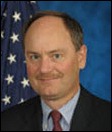

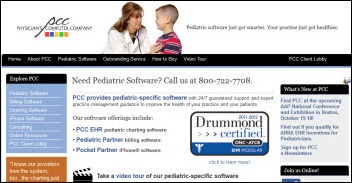

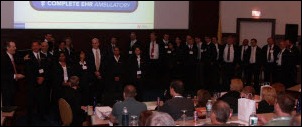







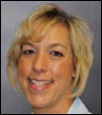



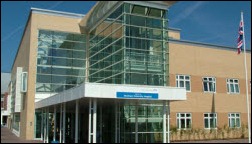

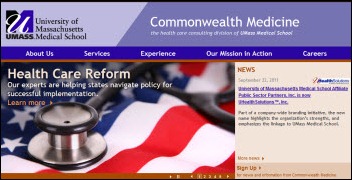



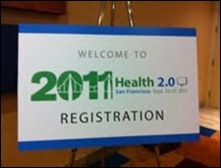

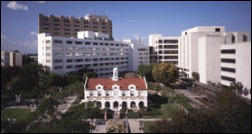



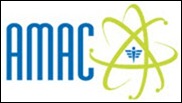






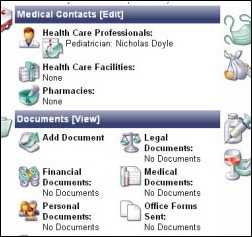
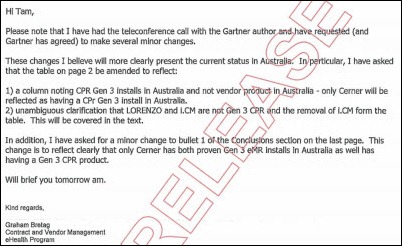




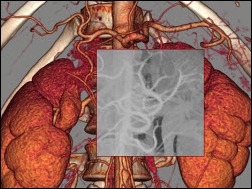




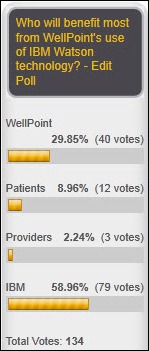


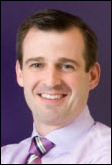




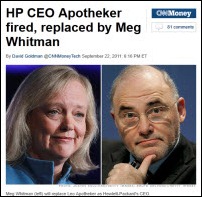


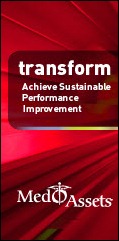
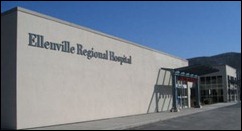

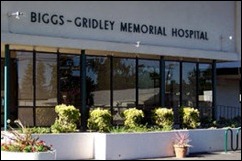


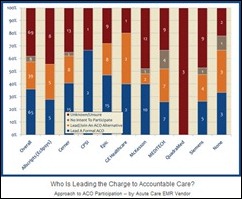


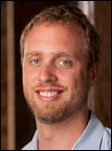
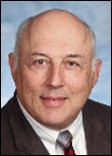


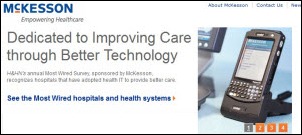

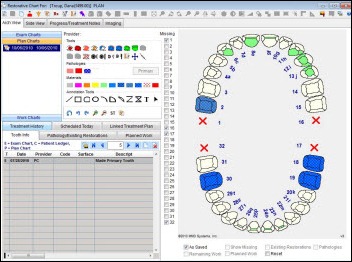



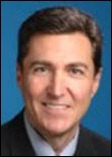

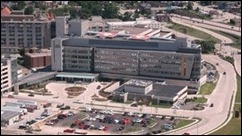



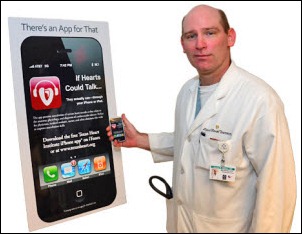
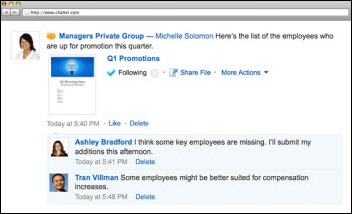





















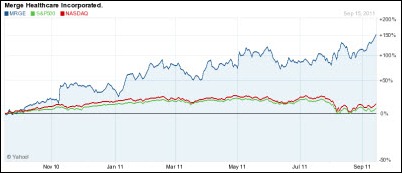


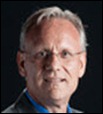
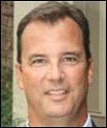
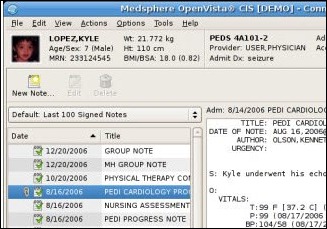

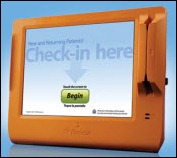


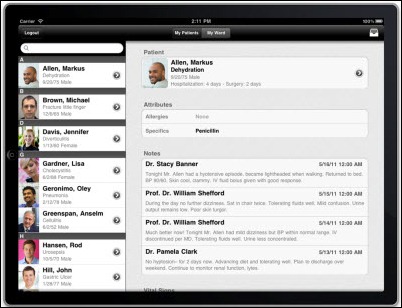





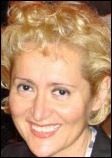
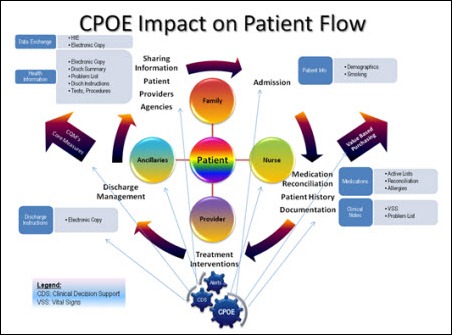

Merry Christmas and a Happy New Year to the HIStalk crowd. I wish you the joys of the season!